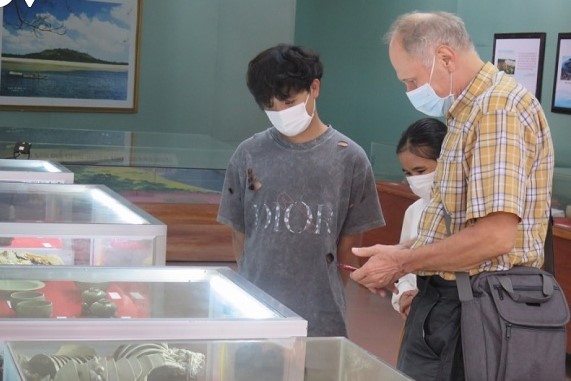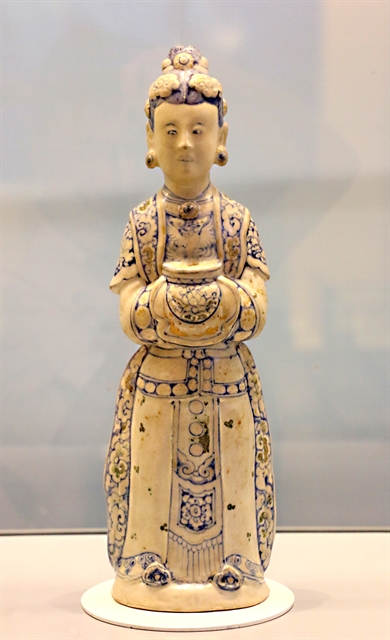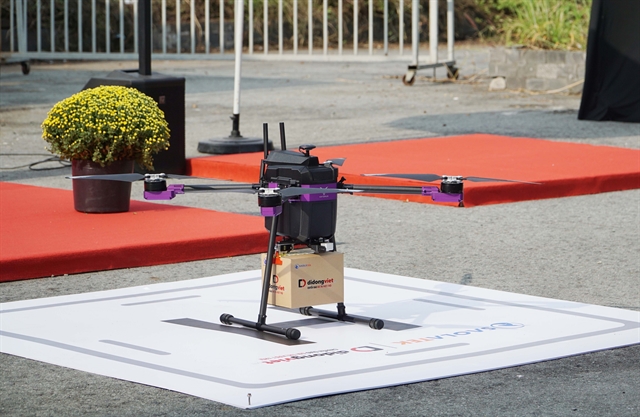 Features
Features

When visiting the central province of Quảng Ngãi, tourists not only have a chance to marvel at the beautiful beaches along the coast but can also see thousands of incredible antiques from ancient shipwrecks at the provincial museum.

|
| Tourists are looking at the antiques displayed at the museum. Photo vov.vn |
When visiting the central province of Quảng Ngãi, tourists not only have a chance to marvel at the beautiful beaches along the coast but can also see thousands of incredible antiques from ancient shipwrecks at the provincial museum.
The exhibition "Di Sản Từ Những Con Tàu Cổ" (Heritage from Shipwrecks) is being held at the museum with documents, images and artefacts salvaged from ancient ships wrecked off the coast of the central provinces of Quảng Nam, Quảng Ngãi, Bình Định and Bình Thuận.
All the exhibits are coastal cultural treasures with significant historical and scientific values.

|
| FANCY FIGURINE: A statue of a noblewoman dating from the 15th century found in a shipwreck off Chàm Island in Hội An, the central province of Quảng Nam. VNS Photo Đoàn Tùng |
One is a beautiful blue enamel figurine of a noblewoman dating from the 15th century found on a ship wrecked off Cù Lao Chàm (Chàm Island) in Hội An, Quảng Nam.
The wreck in Cù Lao Chàm was surveyed and salvaged from 1997 to 1999, with the remains of the ship measuring 29.4 metres long and 7.2 metres wide.
The ship was transporting Chu Đậu ceramics produced in the Red River Delta, Việt Nam, to other countries through the Silk Road when it was wrecked, according to Dr Đoàn Ngọc Khôi, deputy director of Quảng Ngãi Museum.
Some 240,000 valuable artefacts were salvaged, including ceramics, bronze objects, metal kitchenware, Chinese coins, mortars, spices, seeds, and the crew's belongings. It is one of the biggest finds ever made by local archaeologists.
The haul included many 15th century Chu Đậu ceramics from the Lê dynasty (1428- 1789), with various enamel and decorative patterns.
Many have blue, celadon, white, brown and multi-coloured enamels, and have distinct features of Vietnamese ceramics, different from the Chinese ones.

|
| A JUG IN TIME: Artefacts from Chàm Island shipwreck are on display in Quảng Ngãi Museum. Photo sggp.org.v |
Swiss tourist Hannes Schule is fascinated by the exhibition.
"It is amazing to watch the artefacts from the ancient shipwrecks with my own eyes," he said. "It gives me a chance to get to know the typical cultural characteristics of Quảng Ngãi and other Vietnamese coastal provinces in the past."
Hundreds of thousands of artefacts have been salvaged from shipwrecks in the central coastal region during the past years.
The highlight of the exhibits is a collection of hundreds of objects found in a 13th century shipwreck in Vũng Tàu seas, and Bình Sơn District of Quảng Ngãi. It was unveiled in an excavation conducted by the Việt Nam Museum of History and the provincial Department of Culture, Sports and Tourism in 2013.
The ship was nearly 30m long and 5m wide, containing a remarkable collection of antiques. The artefacts include ceramics that were salvaged dozens of metres away from the wrecked ship. Some of the 4,000 artefacts originated from China.
Most date back to the 12th century. Many antiquities have unique patterns that are very different from those salvaged in the 700-year-old wreck, according to Khôi.
Valuable and rare artefacts salvaged from an ancient shipwreck in Bình Định can also be found at the exhibition. It is believed to be a Chinese ship on the north-south navigation route, wrecked in the 14th century.
Another wreck was discovered by local fishermen in Tuy Phong District, Bình Thuận about 20 years ago. It was found at a depth of around 40 metres. The boat itself was 23.4 metres long and 7.2 metres wide.
Archaeologists obtained more than 60,000 artefacts from the wreck, mostly blue and white ceramics and a significant amount of coloured porcelains, dating back to the first half of the 15th century.
About 5,000 artefacts from the Bình Thuận shipwreck are stored in Quảng Ngãi Museum.
"Heritage from the ancient shipwrecks in the central coastal provinces shows how Việt Nam played a major role in international trade, as part of the glorious chapter of Maritime Silk Road," said Khôi.
"Commercial ports along the coastal central of Việt Nam have existed and thrived from the Champa to Đại Việt (Great Việt) eras according to historical documents and archaeological excavation. And today, we can still see the physical vestiges of these medieval commercial ports." VNS




